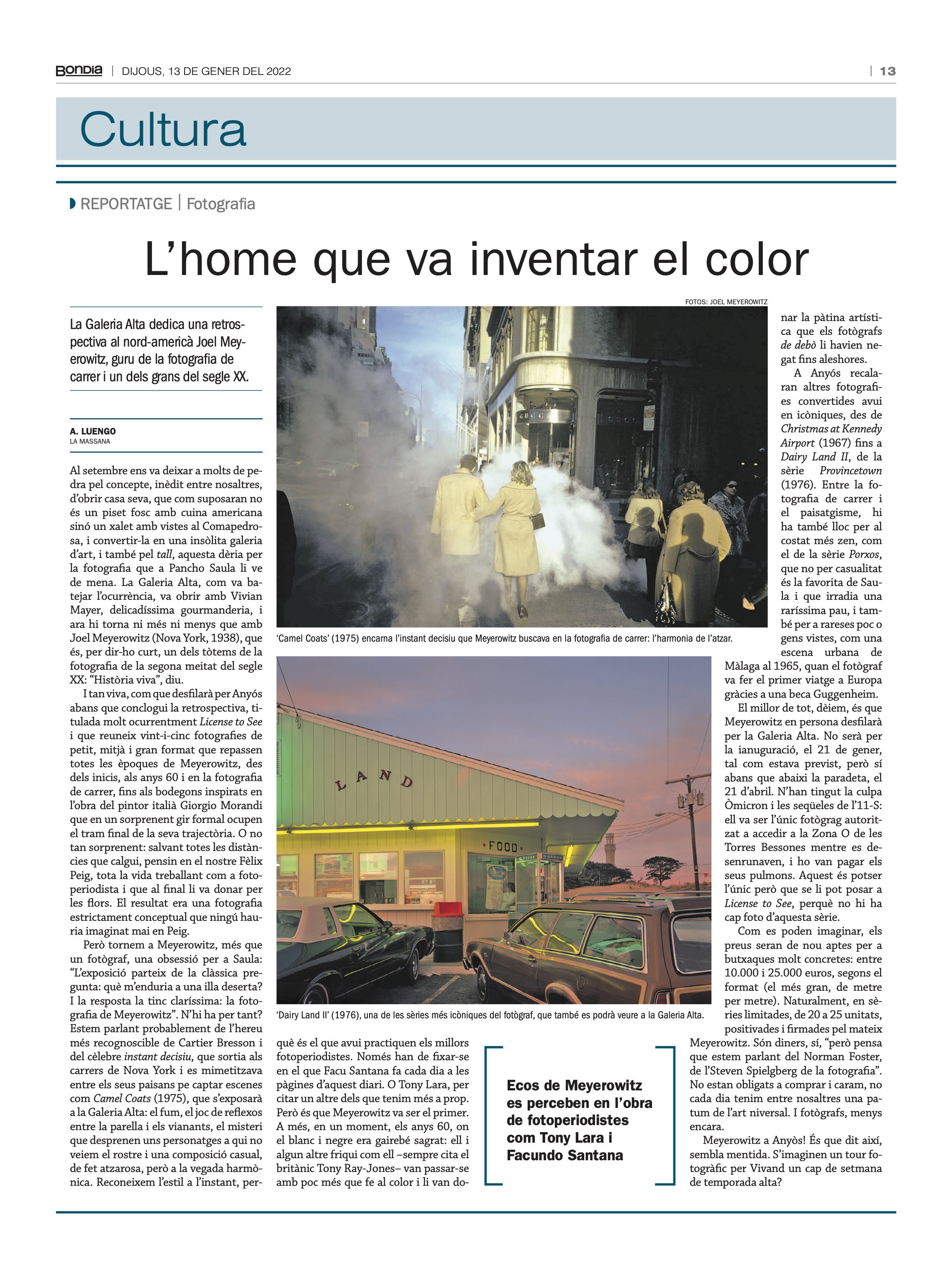The man who invented color
Written by: A. Luengo / Photos : Joel Meyerowitz
Galeria Alta dedicates a retrospective to the American Joel Meyerowitz, guru of street photography and one of the greats of the twentieth century.
Last September Pancho Saula left many of us stunned by the concept, unheard of among us, of opening his house, which as you will assume is not a dark apartment with a little kitchen but a villa overlooking the Comapedrosa, and turn it into an unusual art gallery. Galeria Alta opened with Vivian Maier and now they are back with nothing more and nothing less than Joel Meyerowitz (New York, 1938), who is, to put it briefly, one of the totems of photography from the second half of the twentieth century: "Living history," Saula says.
The retrospective, titled "License to See", presents twenty-five small, medium and large size photographs that review Meyerewitz's career form the beginnings, the 60's and street photography to the still lifes inspired by the work of the italian painter Giorgio Morandi.
But let's get back to Meyerowitz, more than a photographer, an obsession for Saula: "The exhibition starts with the classic question: what would I take with me to a desert island? And the answer is very clear: Meyerowitz's photographs. We are talking about probably the most recognizable heir of Cartier Bresson and the famous decisive moment, who took the streets of New York and camouflaged among his countrymen to capture scenes such as "Camel Coats, New York City" (1975), which will be exhibited at Galeria Alta, the smoke, the play of reflections between the couple and the pedestrians, the mystery that some characters reveal not seeing their faces and the great composition, casual and at the same time harmonious.
We recognize the style instantly, because that's what the best photojournalists do today. But Meyerowitz was the first. Also, at one point, in the 60's, when black and white photography was almost sacred, Meyerowitz was instrumental in changing the attitude towards the use of color photography from one of resistance to nearly universal acceptance.
Other iconic photographs will be exhibited in Anyós, "Christmas at Kennedy Airport" (1968) and "Dairy Land, Provincetown" (1976). Between street photography and lanscape there is also room for a more zen side, such as the "Porch" series, which are Saula's favorites as they radiate a very rare peace. Another great photograph and less known is the urban scene in Malaga in 1965 when the photographer made his first trip to Europe thanks to a Guggenheim fellowship.
Best of all, Meyerowitz himself will visit Anyós. It will not be for the opening on January 21, as planned, but before the exhibition ends on April 21. Omicron and the aftermath of 9/11 have postponed his visit. He was the only photographer allowed to enter Ground zero of the Twin Towers as they collapsed, and his lungs paid for it.
As you can imagine, the prices will again be suitable for very specific pockets: between 10,000 and 25,000 euros, depending on the size, naturally in limited editions, printed and signed by Meyerowitz himself. It's money, yes, "but think we're talking about the Norman Foster or Steven Spielberg of photography." Visitors are not obliged to buy, also it's not every day that we have the opportunity to witness such masterpieces of universal art.
Meyerowitz will visit Anyós! That being said, it seems untrue. Can you imagine a photo tour of Vivand on a high season weekend?

